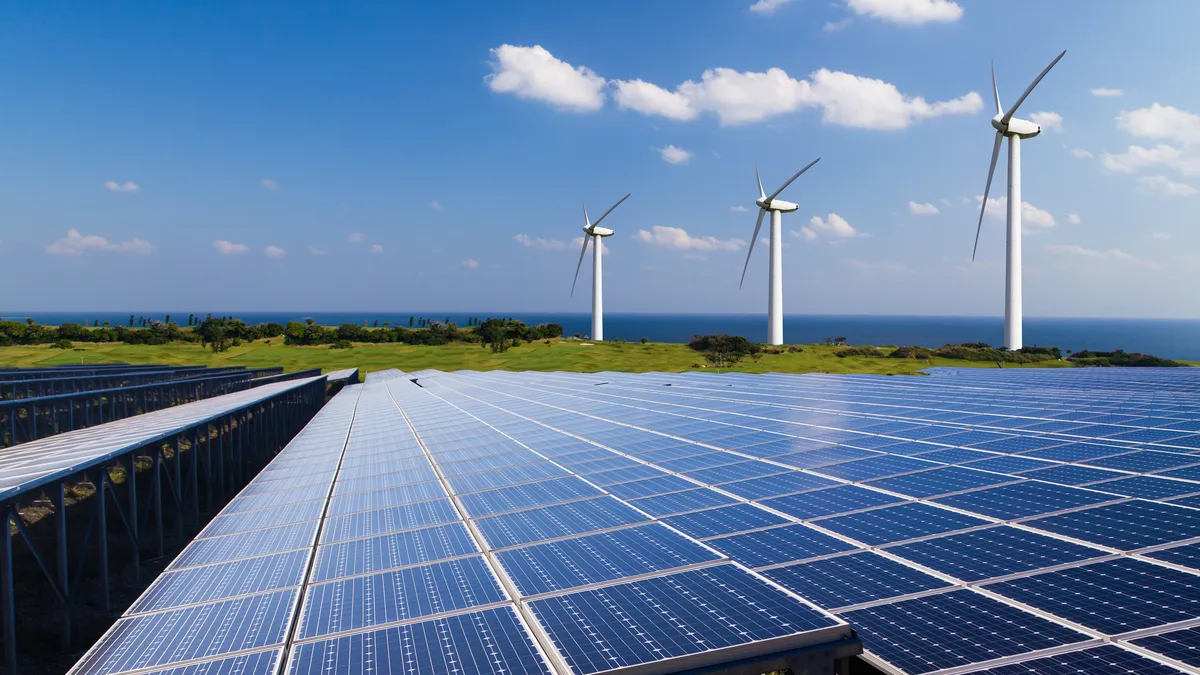Dive Brief:
- Now 10 months in to the implementation of the Inflation Reduction Act, three renewable energy executives said at an American Council on Renewable Energy, or ACORE, event on Wednesday that they are just as enthusiastic about the law’s potential as they were when it passed.
- However, challenges not entirely within the IRA’s purview — including supply chain constraints and transmission shortages — continue to stunt the industry’s growth, they said.
- Hunter Armistead, CEO of Pattern Energy, said he worries that the renewable energy sector will not be able to find solutions fast enough, and that a failure to do so could sour regulators and the public on renewable energy.
Dive Insight:
“I want to emphasize the optimism because we’re going to talk about challenges,” ACORE president and CEO Greg Wetstone said at ACORE’s 2023 Finance Form on managing post IRA-risk. The big picture for the industry, he said, is “all good.”
But the industry faces some critical headwinds. Armistead and his fellow panelists said they feared overselling the potential growth of renewable energy could ultimately backfire. Transmission, he said, simply cannot be built as fast as some renewable energy proponents would like. And Sandhya Ganapathy, CEO of EDP Renewables North America, expressed skepticism that U.S. supply chains will ever become fully self-sufficient.
U.S. renewable energy “is the most exciting market in the world,” Armistead said. “We could screw it up, but man is this awesome.”
Pattern Energy is one of the few privately-held developers to successfully venture into transmission, Armistead said. Even so, he said he couldn’t think of a single transmission project that has taken less than a decade to build.
“I think there’s enough people in the room we could all draw the lines on the map and say this is where it should go. We could all figure it out, so we know the problem,” he said. But realistically, he said it’s not likely that transmission will move any faster, so the industry needs to start thinking about alternative solutions.
Supply chain constraints also continue to be a significant issue for the industry, Sandhya said. While transmission has impacted the global renewable energy industry, issues with sourcing solar panels have become a distinctly U.S. issue, she said.
The whole industry agrees on the need for “fair, untainted equipment,” she continued. But the supply of panels coming into the U.S. today is not adequate to achieve the goals the country aims to reach.
“If you’re really talking about the industry moving from 30 GW of installations to 50-60, we are talking about massive numbers,” she said. While the growing number of manufacturing announcements is encouraging, she said, those factories will take years to build and won’t resolve supply chain issues in the short-term — and may not even in the long term, given the questions around whether they will have access to raw materials to create a truly domestic supply chain.
Panelists also identified workforce development and access to capital as key issues they watch. But the biggest worry keeping Armistead up at night? Whether the renewable energy industry is ready to assume the responsibility as the nation’s primary source of energy.
“Can we own being the reliable source of energy?” he asked. “Because when we don’t deliver power, people die. We have to own that responsibility and I don’t think we have done that yet. And if we don’t, regulators will go back the other direction on us.”













